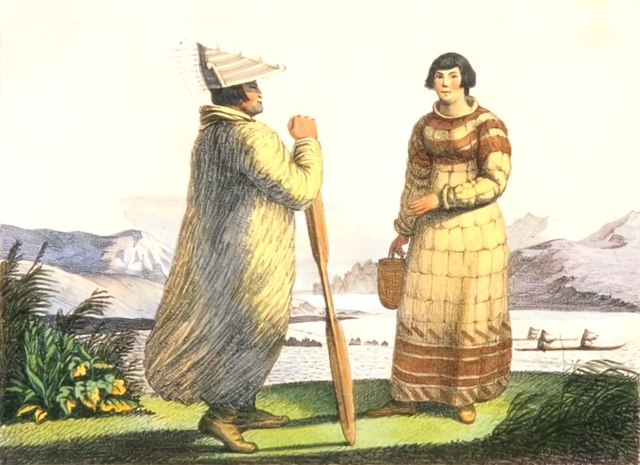Creole peoples may refer to different ethnic groups around the world. The term has been used with various meanings, often conflicting or varying from region to region.
Trilingual signs on Cafe Kreol in Cape Verde.
An Aleutian man with an Alaskan Creole woman in the Aleutian Islands.
A Creole of New Orleans
Bourgeois Louisiana Creole girls in fashionable dress
A creole language, or simply creole, is a stable natural language that develops from the process of different languages simplifying and mixing into a new form, and then that form expanding and elaborating into a full-fledged language with native speakers, all within a fairly brief period. While the concept is similar to that of a mixed or hybrid language, creoles are often characterized by a tendency to systematize their inherited grammar. Like any language, creoles are characterized by a consistent system of grammar, possess large stable vocabularies, and are acquired by children as their native language. These three features distinguish a creole language from a pidgin. Creolistics, or creology, is the study of creole languages and, as such, is a subfield of linguistics. Someone who engages in this study is called a creolist.
A Guadeloupe Creole sign stating Lévé pié aw / Ni ti moun ka joué la!, meaning "Slow down / Children are playing here!"
Haitian Creole in use at car rental counter in the United States






